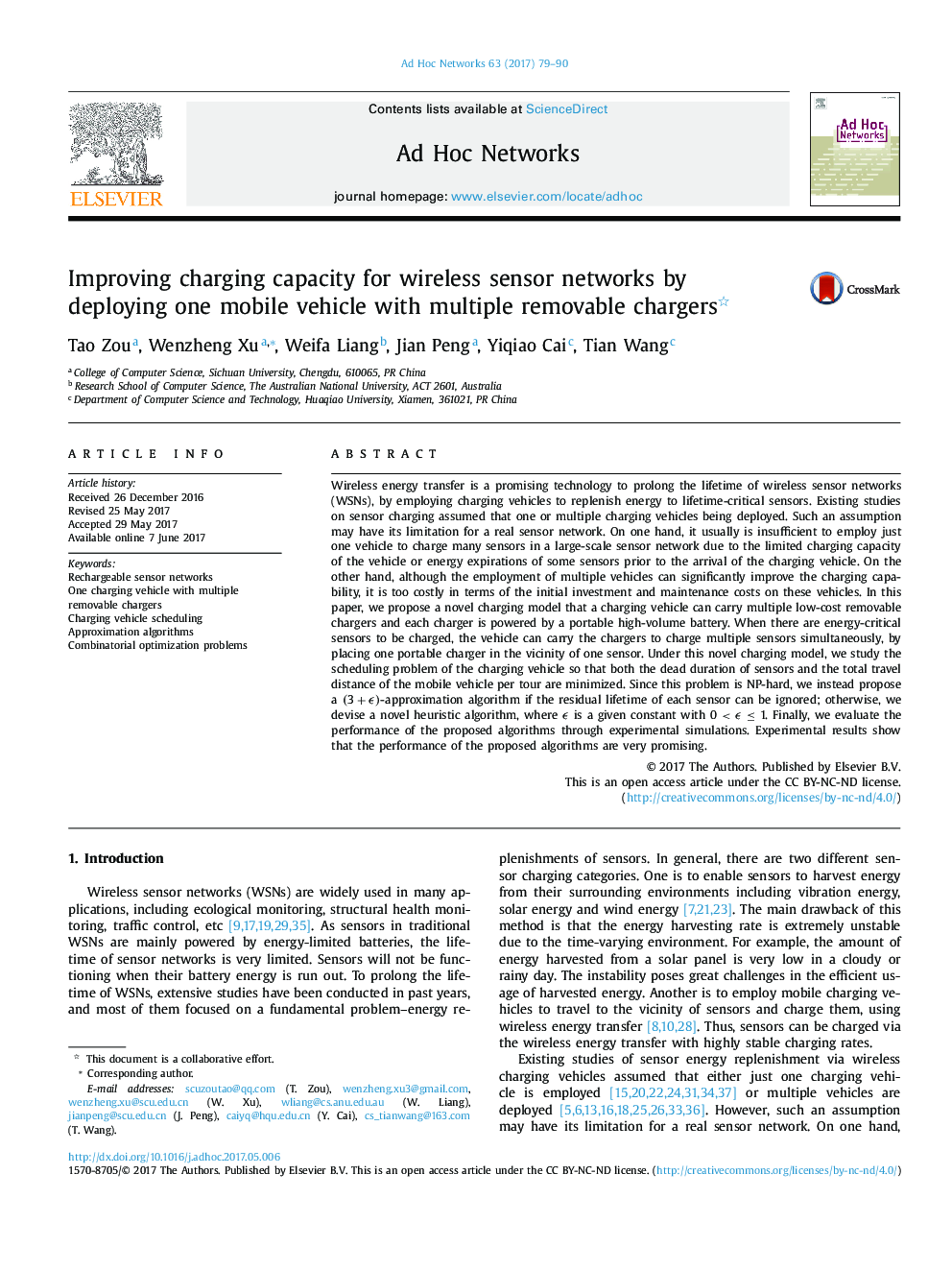| کد مقاله | کد نشریه | سال انتشار | مقاله انگلیسی | نسخه تمام متن |
|---|---|---|---|---|
| 4953509 | 1443056 | 2017 | 12 صفحه PDF | دانلود رایگان |
عنوان انگلیسی مقاله ISI
Improving charging capacity for wireless sensor networks by deploying one mobile vehicle with multiple removable chargers
ترجمه فارسی عنوان
بهبود ظرفیت شارژ شبکه های حسگر بی سیم با استفاده از یک وسیله نقلیه متحرک با چندین شارژر متحرک
دانلود مقاله + سفارش ترجمه
دانلود مقاله ISI انگلیسی
رایگان برای ایرانیان
کلمات کلیدی
شبکه های حسگر قابل شارژ یک وسیله شارژ با چند شارژر قابل جابجایی، زمانبندی شارژ خودرو الگوریتم های تقریبی، مشکلات بهینه سازی ترکیبی،
موضوعات مرتبط
مهندسی و علوم پایه
مهندسی کامپیوتر
شبکه های کامپیوتری و ارتباطات
چکیده انگلیسی
Wireless energy transfer is a promising technology to prolong the lifetime of wireless sensor networks (WSNs), by employing charging vehicles to replenish energy to lifetime-critical sensors. Existing studies on sensor charging assumed that one or multiple charging vehicles being deployed. Such an assumption may have its limitation for a real sensor network. On one hand, it usually is insufficient to employ just one vehicle to charge many sensors in a large-scale sensor network due to the limited charging capacity of the vehicle or energy expirations of some sensors prior to the arrival of the charging vehicle. On the other hand, although the employment of multiple vehicles can significantly improve the charging capability, it is too costly in terms of the initial investment and maintenance costs on these vehicles. In this paper, we propose a novel charging model that a charging vehicle can carry multiple low-cost removable chargers and each charger is powered by a portable high-volume battery. When there are energy-critical sensors to be charged, the vehicle can carry the chargers to charge multiple sensors simultaneously, by placing one portable charger in the vicinity of one sensor. Under this novel charging model, we study the scheduling problem of the charging vehicle so that both the dead duration of sensors and the total travel distance of the mobile vehicle per tour are minimized. Since this problem is NP-hard, we instead propose a (3+ϵ)-approximation algorithm if the residual lifetime of each sensor can be ignored; otherwise, we devise a novel heuristic algorithm, where ϵ is a given constant with 0 < ϵ ⤠1. Finally, we evaluate the performance of the proposed algorithms through experimental simulations. Experimental results show that the performance of the proposed algorithms are very promising.
ناشر
Database: Elsevier - ScienceDirect (ساینس دایرکت)
Journal: Ad Hoc Networks - Volume 63, August 2017, Pages 79-90
Journal: Ad Hoc Networks - Volume 63, August 2017, Pages 79-90
نویسندگان
Tao Zou, Wenzheng Xu, Weifa Liang, Jian Peng, Yiqiao Cai, Tian Wang,
